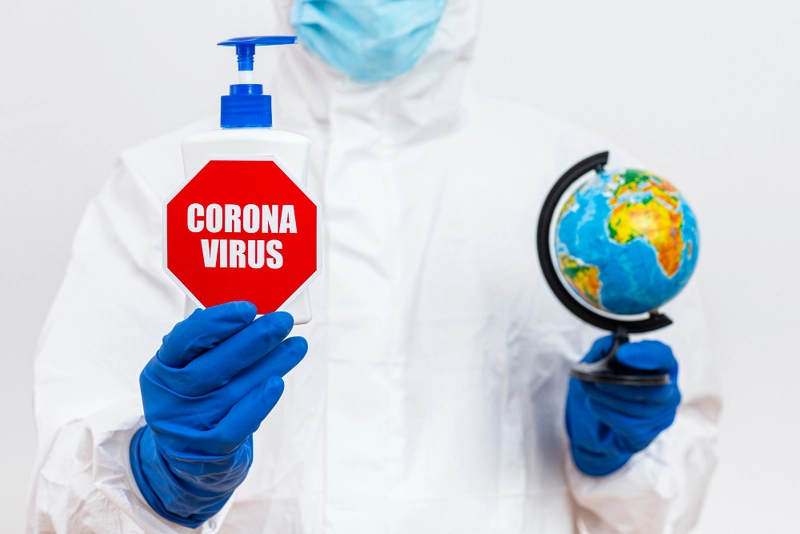Read Blog 
COVID-19 Cases Rising Again in 2025: What You Need to Know
Introduction
After a few quiet years, COVID-19 is once again making headlines in 2025. Many people thought the virus was gone for good, but recent data shows a steady rise in new cases across several countries, including India. While the current variants may not be as deadly as those in the past, it's still important to stay alert and take precautions.
This blog will help you understand why COVID-19 cases are increasing again, what symptoms to look for, how to protect yourself, and why vaccination is still important. Let’s break it down in simple terms.
Why Are COVID-19 Cases Rising Again in 2025?
Health experts say that the recent rise in COVID-19 cases is due to several reasons:
1. New Variants Emerging
The virus is constantly changing. In 2025, a new Omicron sub-variant has been spreading faster than older versions. These new variants may not cause severe illness but are highly contagious, meaning more people are getting infected quickly.
2. People Letting Their Guard Down
Many people have stopped wearing masks or washing hands regularly. With large gatherings, events, and travel back to normal, the virus has more chances to spread.
3. Vaccination Gaps
Booster shots are essential for continued protection, especially for older adults and people with weak immune systems. However, a large number of people in India haven’t taken the latest COVID-19 booster.
4. Seasonal Changes
Just like the flu, COVID-19 seems to rise with seasonal shifts, especially in colder months when people spend more time indoors.
Common Symptoms in 2025
The symptoms of the latest COVID-19 variant are slightly different from those we saw in the early years of the pandemic. Most people are experiencing:
Most cases are mild, and people recover at home. However, the elderly or people with chronic conditions like diabetes or heart problems should be more careful.
What To Do If You Feel Sick
If you notice any of the symptoms mentioned above:
-
Stay home and isolate yourself.
-
Wear a mask to avoid spreading the virus to others.
-
Take a COVID-19 test (at home or at a nearby health center).
-
Monitor your oxygen levels with a pulse oximeter.
-
Stay hydrated and rest.
-
Talk to a doctor online or in person if symptoms worsen.
You can book online consultations and COVID tests from trusted platforms like SecondMedic for quick support.
Importance of Vaccination in 2025
Many people wonder: “If I’ve already had COVID or got vaccinated earlier, do I still need a booster?”
The answer is yes.
Here’s why:
-
Immunity from old vaccines can fade over time.
-
New variants may escape older protection, but boosters are updated to fight them better.
-
Getting a booster shot can reduce the risk of severe illness, hospitalization, or death.
People above 60, pregnant women, and those with chronic conditions should get vaccinated or take a booster dose as soon as possible.
How To Protect Yourself and Others
Even though the current wave is not as dangerous as the earlier ones, it's still better to be safe than sorry. Follow these simple steps to reduce your risk:
1. Wear a Mask
Use a good quality mask like N95 when you're in crowded places like markets, public transport, or hospitals.
2. Wash Hands Regularly
Use soap or hand sanitizer, especially after touching public surfaces.
3. Avoid Crowds
If you’re feeling unwell, stay home. Avoid crowded events if possible.
4. Ventilate Rooms
If you're indoors, make sure there is proper airflow.
5. Stay Updated
Check your local health department's guidelines and case updates regularly.
What the Government Is Saying
Health departments in India and globally are keeping a close watch. So far, there are no full lockdowns, but some states have started recommending masks and social distancing in public places.
Airports, hospitals, and some schools have reintroduced temperature checks and COVID screening. The government is also encouraging people to get booster doses and has increased vaccine availability in public and private hospitals.
Online Healthcare Services: A Safer Option
One major lesson we’ve learned from the pandemic is the power of online healthcare. Teleconsultations and medicine delivery have made healthcare safer and more convenient.
Websites like SecondMedic allow you to:
It’s a safe and smart way to avoid hospital visits unless absolutely necessary.
Final Words
We all hoped COVID-19 was behind us, but the recent rise in cases reminds us that the virus is still around. The good news is, we’re better prepared than before. With awareness, vaccination, and some basic precautions, we can stay safe and healthy.
Let’s not ignore the signs or take unnecessary risks. Whether it’s wearing a mask, getting a booster, or staying informed — every step counts.
Conclusion
As COVID-19 cases rise again in 2025, don’t panic — but don’t ignore it either. The virus may not be as deadly, but it’s still affecting lives. Protect yourself and your loved ones by staying informed, taking your booster, and being responsible.
If you’re looking for fast, trusted help — from COVID tests to doctor consultations — visit www.secondmedic.com today.
Stay safe and stay informed about “COVID-19 Cases Rising Again in 2025: What You Need to Know.”










